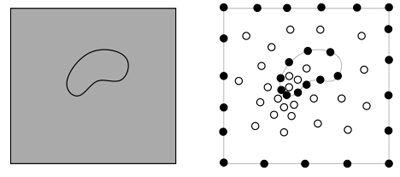Size Complexity of Volume Meshes vs. Surface Meshes
SODA: ACM-SIAM Symposium on Discrete Algorithms, 1041-1047
2009

Typical volume meshes in three dimensions are designed to conform to
an underlying two-dimensional surface mesh, with volume mesh element size growing larger
away from the surface. The surface mesh may be uniformly spaced or
highly graded, and may have fine resolution due to extrinsic mesh size concerns.
When we desire that such a volume mesh have good aspect ratio, we require that
some space-filling {\it scaffold} vertices be
inserted off the surface. We analyze the number of scaffold vertices
in a setting that encompasses many existing volume meshing algorithms.
We show that under simple preconditions, the number of scaffold
vertices will be linear in the number of surface vertices.
@inproceedings{hudson09size,
Author = {Beno\^{i}t Hudson and Gary L. Miller and Todd Phillips and Donald R. Sheehy},
Booktitle = {SODA: ACM-SIAM Symposium on Discrete Algorithms},
Title = {Size Complexity of Volume Meshes vs. Surface Meshes},
Pages = {1041--1047},
Year = {2009}}